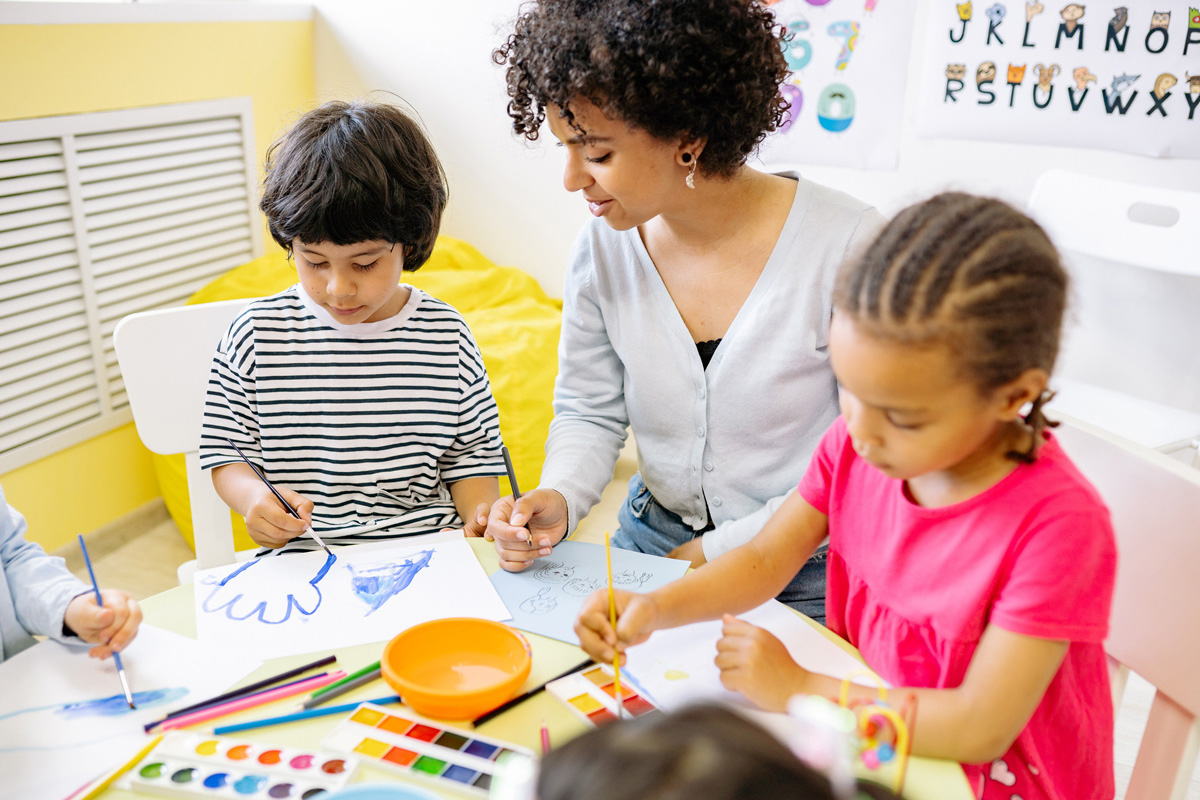Creating a More Just and Merciful World
Benefits Of Arts Education In K-12 Setting

The arts are part of a well-rounded education. Research has shown that arts education helps K-12 students learn important skills needed as they develop into adulthood.
Here are some ways the arts help young students develop.
Motor Skills
Art education encourages fine motor skills, neural development and problem-solving abilities, according to neuroscience research. A study published in the Journal of Neuroscience provides evidence that musical training before the age of seven has a profound effect on the development of the brain—stronger connections between the motor regions. Art-making activities, such as painting, coloring and drawing, also help develop muscle control.
Creativity
It is obvious that creativity flourishes for young students who participate in the arts. Creativity is how we use imagination, originality, productivity and problem-solving abilities. Being creative contributes to students’ well-being by helping them to enjoy what they are doing.
Academic Achievement
Improved academic achievement. Research suggests that students’ academic performance also benefit from an arts curriculum. For example, a study about music and academics found that students who study music have better grades in various subjects.
Confidence
Children’s confidence may also be improved by the arts. Performance, especially, gives students a chance to step outside their comfort zones by expressing themselves in front of others. Greater self-confidence can strengthen other abilities, including communication and collaboration.
Critical Thinking
The arts encourage students to observe things in the world from many different angles. Through an arts education, children can develop critical thinking that is open-minded, yet clear and rational. Critical thinking helps students think about a topic in an objective and critical manner.
Visual Learning
Drawing, painting and sculpting can be especially beneficial for young children who are developing their visual-spatial skills. Through the visual arts, children learn to interpret and use visual information, as well as symbolic systems of representation and communication. These are valuable lifelong skills.
Perseverance
Determination and steady persistence build capabilities and character, while improving relationships and mental health. Whether it is by practicing an instrument, performing a dance move or completing an art project, students learn that hard work and perseverance pays off.
Become an art teacher – Create a Positive Tomorrow
Art experiences have profound effects of students’ academic, social, emotional and physical well-being. The important role the arts have in human development is why many schools seek to maintain or enhance their arts programs. To do so, they need dedicated arts educators who can teach children and youth skills that can expand their horizons.Carlow offers a master’s degree in Art Education program that will prepare you to teach art in pre-K through grade 12 or to work with children and adolescents in nonprofit or community organizations. The MEd in Art Education complements other graduate offerings in Early Childhood and Special Education and offers core courses shared across these programs.
